Everyone stares as you step over the dojo threshold. Anxiety creeps in, stirring the paranoia within. Am I a nuisance training here? Am I an embarrassment for stumbling through even the ‘simplest’ of techniques? I don’t want to be a burden to anyone because of my slow learning ability…
Part One of Dealing with Anxiety in Martial Arts and Sports as a Slow Learner explored the source of my anxiety upon resuming Aikido training after a half-decade break, which eventually revealed that the anxiety was not exclusive to Aikido. It affected my ability to function even in other physical disciplines. I needed to overcome this hurdle to become a better martial artist and athlete.
Thus, with the goal of improving my underdeveloped learning ability in sports and martial arts, part two first outlines the plan to tackle performance anxiety and the inferiority complex in my abilities. It then proceeds with the specific steps taken to execute the plan and fine-tune my ability to learn physical, motor and movement skills.
Using myself as a ‘case-study’, the following seeks to help fellow martial artists and athletes who struggle with anxiety and learning challenges.
Plan of Attack: Defeat performance anxiety & be a better martial artist and athlete
Believe… You can never change ‘destiny’ if you don’t believe it can be changed

The greatest impediment to getting rid of performance anxiety and developing my learning ability was my complete lack of faith that change can be made.
Perhaps it was the bad childhood experience in martial arts that tainted my later experiences with pessimism, but I regarded my slow learning ability and lack of natural coordination ability as a permanent debility. Years of facing undisguised frustration due to these weaknesses had made me paranoid to the slightest sign of irritation and ingrained a deep-seated inferiority complex, where I accommodated to others’ frustration at the cost of my self-esteem.
In time, I was led to the crossroads where I saw only two choices: (1) to give up or (2) remain at status quo. Both choices indicated that I had accepted anxiety, the feelings of inferiority and my weaknesses as a norm that was set in stone, unchangeable throughout my lifetime. This was the problematic attitude I needed to change to overcome the underlying inferiority complex that fed my performance anxiety. It would be futile to change something that I sincerely believed had no hope to be changed.
Acknowledge your perceived weaknesses & shut your negative inner voice up
The first step to defeating anxiety and inferiority complex is to acknowledge your weaknesses as a work-in-progress. Believe in the potential and possibility to become better and eliminate that negative inner voice that keeps saying: “(expletive!), I will never get this!”.
Weaknesses in learning and ability can be improved with practice. No exceptions. You are not that special in that only you have a particular set of challenges that works against you; many athletes and martial artists have successfully coped with and overcome their weaknesses, not letting their shortfalls define them or cause them to feel inferior. What truly defined these individuals were their perseverance and tenacity to overcome the odds to become great.
So, start by changing your inner voice. Instead of saying “never”, say: “I’m not getting this – yet“. Eventually transform it to: “I can do this.”.
Kill the root of anxiety: Dispel the beliefs fuelling your inferiority complex
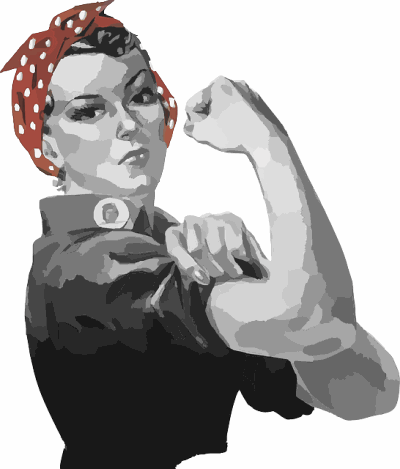
Overcoming an inferiority complex involves battling against the vicious self-reinforcing cycle of a false underlying belief in your inferiority. By believing you are inferior (due to some weakness – real or imagined), you will inadvertently influence your behaviour and actions to prove that belief right. Each time this happens, the inferiority complex and anxiety gains more power.
The plan is to deprive the inferiority complex and anxiety of its fuel by killing its root – dispel the false beliefs over your weaknesses, challenges and inferiority.
Easier said than done! How do you dispel false beliefs of your inferiority (especially when you have believed it your whole life)?
Prove to yourself that your perceived weaknesses neither define you as a martial artist and athlete nor make you inferior. The fact that you’ve managed to convince yourself of your inferiority (which is completely untrue) and reacted to it is a testament to how remarkably malleable the mind is.
Recall the workings of the self-reinforcing cycle of belief? The inferiority complex began from a trigger and then strengthened each time you ‘proved’ your false beliefs to be accurate. What needs to be done to reverse the cycle is to prove to yourself that your weaknesses don’t make you incapable. You need to create a few experiences of yourself training somewhat confidently. These few experiences are meant to trigger other positive experiences, and eventually prove that your inferiority is just in your head.
Experiential proof is necessary to reverse the inferiority complex for two reason: (1) comprehending that your weaknesses don’t make you inferior without proof makes it difficult for your mind to internalise this fact, and (2) you need to counter and replace the emotional link to the many unpleasant ‘evidences’ you have experienced during the self-prophecy cycle of being inferior with new experiences. This is the objective to work at – prove to yourself that you are not inferior.
Yes, I know. The theory sounds good except for one huge issue – how do you create a confident training experience when you are suffering from anxiety in the first place?
Before you write me off as being ridiculous, read on. I will illustrate how I managed to gradually become confident during training, sparking off a positive self-reinforcing cycle of effective learning.
Informal Case Study: How To Alleviate Anxiety and Learn Better in Martial Arts & Sports
1. Bring control over anxiety & get to know yourself
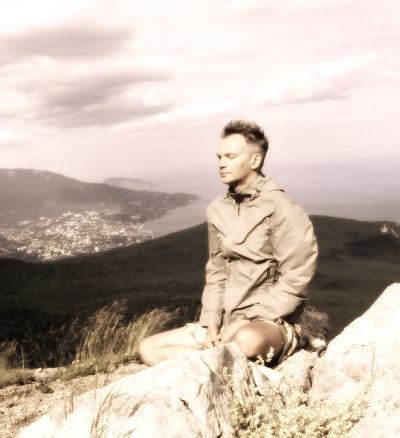
First, use any means within reason to maintain some control over your anxiety, even if its effects are temporary. Without minimising anxiety, you will be distracted, making it difficult to set up new experiences to counter-prove the belief underlying your inferiority complex.
At the same time, observe yourself closely in the perspective of a third person (no self-judgements or negative internal dialogue required – just shut up and watch). Learn about the specific circumstances that causes your anxiety to spike. More importantly, notice the habits, behaviour and quirks that you use to cope with anxiety – specifically things that you do to avoid being at the centre of attention and to hide mistakes.
How I did it: Getting familiar with the training environment & observing myself
As before, I allowed myself to rebuild the feelings of familiarity and trust to my training environment, expediting the process by training at the dojo regularly. Soon after, I became desensitised to most major anxiety triggers and relaxed enough to learn during Aikido training.
However, unlike the last time where I relegated this process to my subconscious mind, I was observing myself closely to study specific triggers that made my anxiety spike and determine my coping habits. One coping behaviour and one anxiety trigger stood out.
Coping Behaviour: I had been relying on speed and momentum to hide the gaps in my technique execution and mask my lack of confidence.
Anxiety Trigger: Group training that involves synchronised moves (anything that resemble kata training in something that I’m unfamiliar in). Notably, weapons training in Aikiken Suburi and sometimes Kumitachi.
Note: For those of you who find it difficult to gain temporary control over anxiety in this step, I intend to update an early article I wrote about Anchoring that can be used for this purpose.
2. Be one with the idiot within & be in the moment

With anxiety temporarily under control (from the prior step), become comfortable with making mistakes in the presence of others. Develop the thick-skin required to be okay with looking like a fool while learning a new skill in martial arts and sports. Immerse yourself in the moment as an active participant and learner.
Active participation means that there is no space in your mind to engage in negative internal dialogue, self-judgement or vivid imagination of embarrassing yourself. There is only you and the technique you are learning. Nothing else matters.
But how do you become one with the moment?
Based on the observations you made in the last step, what was one significant coping behaviour that you’ve used to conceal your insecurities? Strike down this coping behaviour. Without a coping behaviour to hide behind, you will be forced to stumble through errors during training and learn how to function without being self-conscious.
In essence, the gradual elimination of this one significant coping behaviour will make your mistakes and stumbling noticeable to the people around you. Over time, you will become used to situation and be able to block the anxiety. When you are able to do that, you begin to become one with the moment; able to refine the skill you are learning through trial and error without distraction. This will set you up to prove your false beliefs that fuel your inferiority complex as false.
What I did: Slowing down my technique execution
Having relied on speed and momentum to conceal the quirks and gaps in my Aikido techniques, I felt naked the moment I slowed down. Every kink in my movements became apparent, making my anxiety surge. Since I couldn’t hide the gaps in my technique, I ended up stumbling like an idiot. It felt as though all eyes were on me and I had to consciously resist the urge to speed up out of habit.
Yet, this was an immensely useful exercise to practice being in the moment. There was no way for the people around me to ‘unsee’ the mistakes that I exposed. Hence, I had to correct myself and figure out the subtleties of the technique at my own pace. The alternative was to continue stumbling throughout the entire training and learn nothing. From being focused on observing and correcting my technique, I became less self-conscious and was eventually able to block out the existence of everyone within the dojo. I had become one with the moment, actively adjusting my technique from observed feedback and not wasting energy on panicking.
By the end of the first week of eliminating this one major coping behaviour, I was seeing noticeable improvements in my training. This was the first shred of evidence that my learning ability was not as awful as I believed. It was the anxiety that was blocking out my processing ability. In slowing down my technique execution, I also realised that using speed to mask my ineptitude was only cheating myself of the training progress that I wanted.
3. Accept that criticisms are inevitable: Learn from them and ignore the unconstructive
Even after becoming comfortable with making mistakes ‘publicly’, there will certainly be occasions when you are criticised. Accept the situation and whatever useful feedback you receive with a relaxed attitude and always be in the moment as an active participant in training. When offered unconstructive criticism, pay no attention to the negativity and persist in your efforts. Take this as a test of your ability to function amidst setbacks and hurtful comments. Focus on the training at hand and waste none of that energy on feeling horrible.
Be willing to embarrass yourself, have a can-do attitude & accept help
Surprisingly, after noticing me slow down and consciously correcting my technique, senior Aikidokas began to give specific tips and subtle resistance to help improve my technique execution. I was able to refine specific nuances of my technique with each repetition with the feedback I was receiving. Even during advanced training, neighbouring senior trainees, who had noticed my partner and I struggling with trial and error, would glance over to get our attention and then deliberately slow down their training to demonstrate the technique with specific emphasis on the parts we were having trouble in.
This made me realise that it wasn’t me being slow that frustrated people, it was me being distracted by anxiety and accepting the status quo that frustrated people. By being willing to embarrass myself coupled with a can-do attitude people are more than willing to help out.
Being okay with long-drawn multiple corrections by Sensei
The first time when Sensei corrected me several times consecutively, I was nearly in tears from anxiety. This was because the class would pause their training to take note of Sensei’s pointers, bringing the attention to me.
Yet, I have come to the conclusion that Sensei was trying to help me overcome the anxious dialogue in my head and make improvements. So, when this happened recently, I reigned in the anxiety and blocked out the other trainees (this was a recently acquired ability from Step 2). There was only Sensei, the technique and me. Miraculously, I saw the point he was trying to make and corrected my mistake immediately. Subsequently, whether it was being corrected or training in a new technique variation, I would go slow initially and block out the other trainees.
Watch all you want. But I am going to figure out the technique by making mistakes first and making subtle corrections with each slow repetition.
4. Learning how to learn
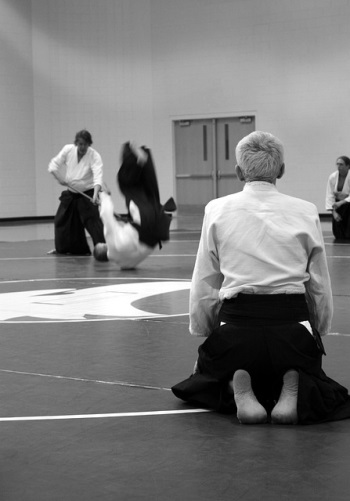
The very step of eliminating your coping behaviour forces you to manage your anxiety, accept that everyone to a certain extent stumbles when learning, be in the moment and correct yourself on the fly. These are some steps I took to improve my technique execution in Aikido and, by extension, learn how to learn. They also include experiential proofs that my weaknesses were exaggerated in my mind’s eye and in no way made me an inferior martial artist.
Being mindful of my movement and making gradual corrections
By simply being mindful of my movements and how my partner reacted to my technique execution, I was able to pinpoint and dissect the quirks that made my technique less effective. Once conscious of my mistakes, I worked on correcting my movements with each technique repetition, sometimes needing to do trial and error and several subtle adjustments to get it right. By the end of each training, my arsenal of techniques were becoming more effective. And the process of struggling through trial and error helped commit my training to muscle memory.
This would not have been possible without slowing down, learning to block out anxiety and immersing myself fully in the trial and error process.
Observing seniors and training partners
Where trial and error failed for complex techniques (especially during advanced Aikido training), observing senior trainees and my partner (if he isn’t just as lost) often helped me figure out the movements. I would imagine that I was doing the movements right beside the senior Aikidoka, which somehow activates my spatial memory.
For further refinements, observing my training partners technique execution would often help improve my technique by revealing either my partners’ strengths in the technique or the mistakes I should avoid.
Dissecting the common movements behind each technique
Most martial arts techniques share a core set of movements. For instance, training in Gyakuhanmi Shihonage taught me the partial footwork for another technique. By becoming better in one technique, I was setting the groundwork for several other techniques. The movements and principles were cross-functional.
Establishing key movement points & preferred observation angles
Learning skills and movements in each physical discipline is different, but I believe the key points of movement to observe are similar. Within Aikido, when observing a technique demonstration as a beginner, it would seem as though there is a lot going on. And there is. This is why it is important to establish some key observation points. Trying to take in everything at one go is madness (at least for myself). Personally, I note the general movements first without focusing on the details. Next, I break it down into footwork, arm extension and distancing. This works for me in Aikido most of the time.
On observation angle, I learn the best when observing the instructor’s back view. This eliminates the extra effort to convert movement direction to my point of view, unlike observing the front-view and side-view; when the instructor moves his right hand, I move my right hand. There is no confusion over… He is facing me. If he moves his right hand diagonally across, I move my left hand diagonally across. Wait, what did I miss?
Experiential Proof that I am NOT Inferior
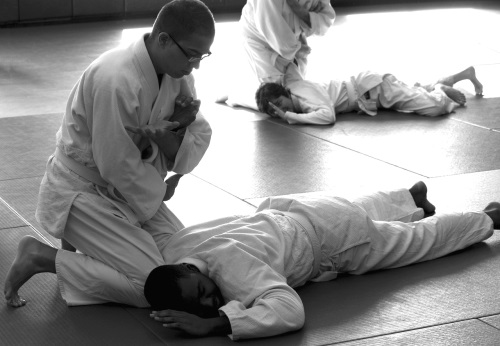
Within the case-study how-to above, I have proven to myself numerous times that my learning ability was in fact not subpar. It was merely anxiety, paranoia and pessimism that was distracting my focus in training.
A quick glance around in the dojo, when trying to get pointers from senior Aikidoka revealed that there were trainees who were more lost than I was. I have also partnered up with a few Aikidoka of the same rank who I had to guide in unfamiliar techniques. I was able to figure out and execute the movement because my mind was not preoccupied with the notion of embarrassing myself. That said, I have encountered issues with processing what I observed when sleep deprived or after a long bout of continuous full-speed training.
Back on point, the feelings of inferiority were naturally reduced when I prove my underlying belief inaccurate time after time. Moreover, some observations I made of beginning, lower rank and same rank Aikidokas helped give perspective on my fixation on natural ability, learning ability and attitude. These trainees can be categorised into two groups: (1) trainees who remind me of myself and reveal insight on my self-sabotaging behaviours and (2) trainees who are naturally gifted and reveal insight on improving my learning ability.
- Even naturally-gifted learners stumble in their training
sometimesmany times. When they do stumble, they choose to persevere without fear of being judged. This attitude and not natural ability determines most of their progress. - Using speed to mask mistakes only hides your own mistakes from yourself. Every other person notices your mistakes but has no opportunity to correct you because you are trying to get over the technique.
- Anxiety and nervousness blocks out the ability to assimilate feedback from the Sensei and Sempais. Get over your paranoia and be in the moment.
- Impatiently trying to implement several points of adjustments at one go often backfires. Take it one step at a time. Work it into your muscle memory by repeating the move a few times before implementing the next correction.
- It is good to train on speed and power, but not at the cost of executing the correct technique. Against a stronger opponent, your swift but poor technique will be ineffective.
The Way Forward
In the months leading up to November last year, I became comfortable with cursory glances, criticisms and the possibility of making glaring mistakes. By being willing to look like a fool and put myself out there, I gained much more and progressed much quicker. I will acknowledge that I still have issues with weapon techniques. But it is more of the matter of learning the key focus areas for observing weapon demonstrations.
Thus far, this article hasn’t talked about my sports performance anxiety outside my regular Aikido dojo environment. But I have indeed worked on the issue by exposing myself to other training environments, visiting other dojos as a guest Aikidoka, taking up MovNat, and opting to workout in public areas (e.g. parks, public fitness stations). The diversity in experiences is helping me build a comprehensive “toolbox” of anxiety management techniques and effective movement-learning methods. I intend to share these experiences in separate posts in time to come.
Additional Notes
Joelle White has kindly pointed out that the problem of slow learning, specifically in remembering or processing movement sequences, is called Directional Dyslexia. This is something that both Joelle and I have challenges with to some extent. To find out more about Directional Dyslexia and how Joelle manages it, read her article: Dyslexia – a Path to the Heart of Karate.
And here’s part one of Dealing with Anxiety in Martial Arts and Sports as a Slow Learner, if you haven’t already read it.


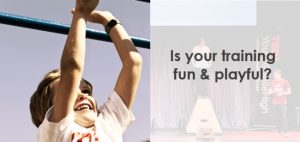

![18-Year Old “Samurai” Martial Artist – Jack Sharp [Interview Case Study]](https://www.wayofninja.com/wp-content/uploads/2016/06/Jack-feature-420x280.jpg)